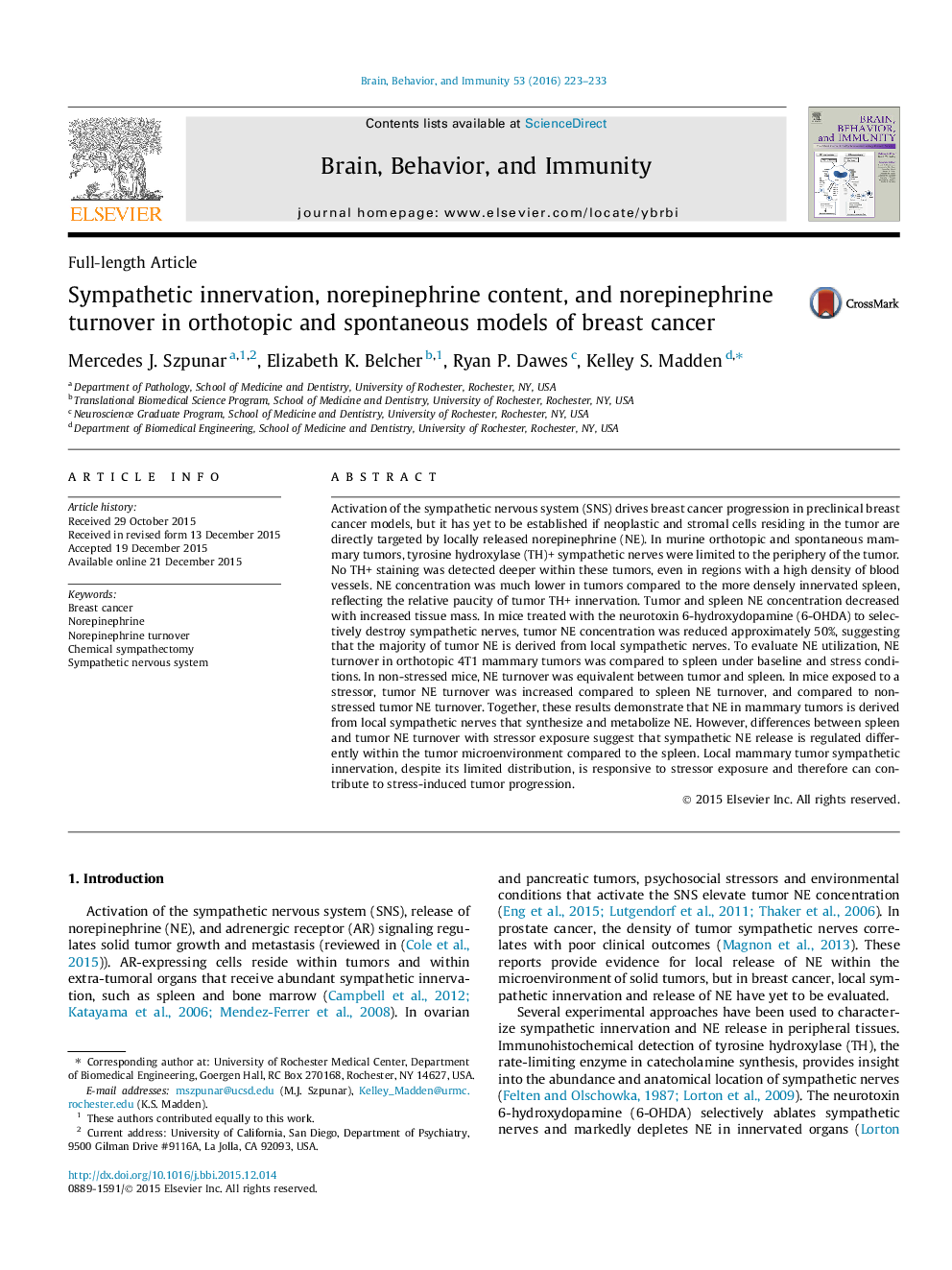| کد مقاله | کد نشریه | سال انتشار | مقاله انگلیسی | نسخه تمام متن |
|---|---|---|---|---|
| 922093 | 1473914 | 2016 | 11 صفحه PDF | دانلود رایگان |
• TH+ nerves and NE turnover are demonstrated in murine mammary tumors.
• TH+ nerves are restricted to the tumor periphery.
• Sympathetic nerves are a major source of norepinephrine within mammary tumors.
• Stressor exposure increased mammary tumor NE turnover.
• Stressor exposure may regulate mammary tumor progression by local NE release.
Activation of the sympathetic nervous system (SNS) drives breast cancer progression in preclinical breast cancer models, but it has yet to be established if neoplastic and stromal cells residing in the tumor are directly targeted by locally released norepinephrine (NE). In murine orthotopic and spontaneous mammary tumors, tyrosine hydroxylase (TH)+ sympathetic nerves were limited to the periphery of the tumor. No TH+ staining was detected deeper within these tumors, even in regions with a high density of blood vessels. NE concentration was much lower in tumors compared to the more densely innervated spleen, reflecting the relative paucity of tumor TH+ innervation. Tumor and spleen NE concentration decreased with increased tissue mass. In mice treated with the neurotoxin 6-hydroxydopamine (6-OHDA) to selectively destroy sympathetic nerves, tumor NE concentration was reduced approximately 50%, suggesting that the majority of tumor NE is derived from local sympathetic nerves. To evaluate NE utilization, NE turnover in orthotopic 4T1 mammary tumors was compared to spleen under baseline and stress conditions. In non-stressed mice, NE turnover was equivalent between tumor and spleen. In mice exposed to a stressor, tumor NE turnover was increased compared to spleen NE turnover, and compared to non-stressed tumor NE turnover. Together, these results demonstrate that NE in mammary tumors is derived from local sympathetic nerves that synthesize and metabolize NE. However, differences between spleen and tumor NE turnover with stressor exposure suggest that sympathetic NE release is regulated differently within the tumor microenvironment compared to the spleen. Local mammary tumor sympathetic innervation, despite its limited distribution, is responsive to stressor exposure and therefore can contribute to stress-induced tumor progression.
Journal: Brain, Behavior, and Immunity - Volume 53, March 2016, Pages 223–233
